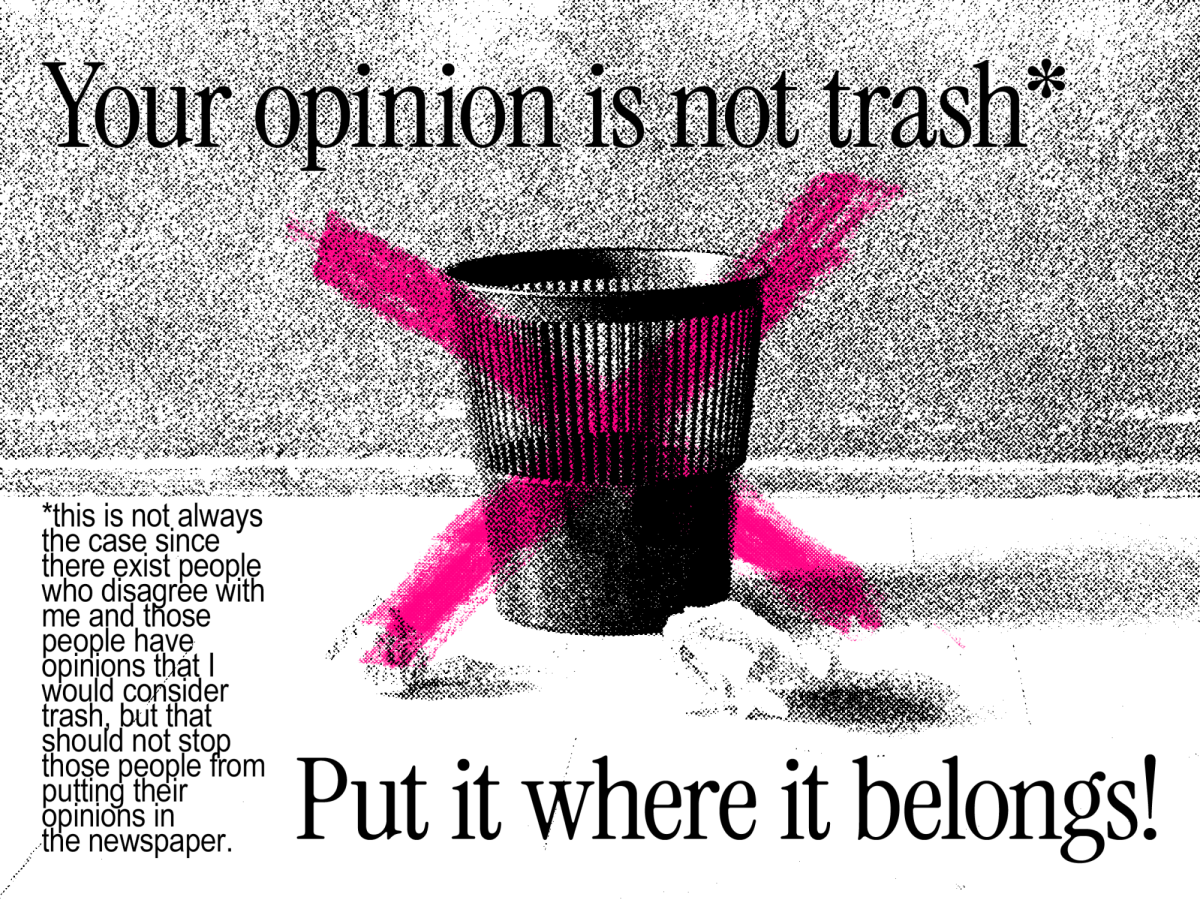A Letter From the Editor
The Spectator published a story last week titled, For The Kids? SU Dance Marathon Is Met With Criticism. The subsequent feedback we received was bittersweet. Since the story ran, three of the four sources interviewed for the article have since stated that they felt their quotes were misrepresented, and several members of Seattle University Dance Marathon have sent me letters and emails stating they felt the article had ill intentions, failed to tell both sides of the story and discredited the good things Dance Marathon has done in the past, among other things.
First and foremost, it’s regrettable that the sources feel that way. I thought their words spoke truth to an otherwise unspoken controversy.
Second, I assure anybody reading this that the Spectator bore no ill intention when the story was assigned, written or published. The purpose of the article was to expand on conversations that several Spectator staff members, myself included, have had with others in the Seattle University community.
Third, I don’t believe there are two sides to this story. In a perfect world, cancer wouldn’t exist and Dance Marathon would have to find another reason to dance for 16 hours straight.
That said, let me be frank: Dance Marathon is subject to the pitfalls of white saviorism like any nonprofit or charity organization. The quotes and sources in the article, if anything, demonstrated that SUDM is for the most part cognizant of their own privilege.
One of the many letters I received said that cancer doesn’t discriminate.
Well, according to the Centers for Disease Control and Prevention, research showed that cancer incidence rates were highest among black men and white women, and death rates were highest among black men and women. The pile of research connecting race and health has been growing for decades. Historical discrimination and structural racism often leads to poverty, lack of education, poor transportation and insufficient housing. In many cases, African Americans and other groups fare worse than white people in the same income level. Often people of color experience a wide range of serious health issues at a higher than white people do. This includes various forms of cancer.
Nearly 70 percent of Seattle residents are white, while less than 8 percent are black. What can Seattle University Dance Marathon do about that? I don’t think the onus is on me to answer that question.
— Nick Turner, Editor in Chief
A Statement From SUDM
“Do not be daunted by the enormity of the world’s grief. Do justly, now. Love mercy, now. Walk humbly, now. You are not obligated to complete the work, but neither are you free to abandon it.” – The Talmud
We, Seattle University Dance Marathon, will continue to lobby for changes in our healthcare system, to teach and lead sessions on inclusivity for our fellow dance marathons, to contribute to a sense of community on our campus, and do what saves the most lives now. We imagine a world where no family will need uncompensated care. Until then, we will put the kids first because everyone deserves a childhood.
SUDM is committed to the kids and to our community. We welcome you to partner with us in this fight. Join us and our friends at Relay for Life on April 28th where we will be relaying to cure cancer and save lives. The fight never stops. We are looking for our peers to commit with us. To learn more about the fight, the kids, and how to get involved, visit our website at www.seattleudancemarathon.org.
For The Kids,
— Desi Caswell, Executive Director of Seattle University Dance Marathon
Dear Spectator,
I want to thank you for addressing concerns that were voiced about the fundraising model of Dance Marathon in the article “For the Kids? SU Dance Marathon Is Met With Criticism.” Questions about privilege, our broken healthcare system, and improving the student experience at SU are important ones that, as a Jesuit institution, we should never be afraid to ask and reflect upon. The article, although well-written, fails to give voice to an important group of people in this story – the families who benefit from the fundraising.
My youngest daughter, Isabelle, has been treated for a myriad of health concerns and problems over the last five years at Seattle Children’s Hospital. Even with the insurance I am lucky to have through my work at Seattle University, my family would have gone bankrupt several times over, or worse, without the generous help of Seattle Children’s Uncompensated Care Fund. There were many sleepless and tear- filled nights as my daughter was in the hospital, when I wondered how I could find the money to cover the medication she desperately needed that our insurance had already twice rejected. That level of panic and desperation is something that I would never wish upon any person entrusted with the care of a child.
At one point, my daughter was having over 60 seizures a day and we were told that without a specific medication, the number would continue to grow and she would have permanent, irreversible brain damage. The course of the medication, the only medication research had shown that was effective for her particular neurological disorder, was over $100,000. Our insurance rejected our requests even though our doctors urged them to approve it. We were faced with finding a way to raise $100,000 to pay out of pocket for the medication or watch our daughter disintegrate. Little did we know that because of the fundraising done by groups such as Seattle U Dance Marathon, there was another option to cover the costs.
Yes, I agree fully that we at Seattle U as agents of social change should continue to address systematic problems of high medical costs and corruption in the insurance industry. And as a father of small child who has been very sick and at risk of dying, I can honestly tell you that was not where my heart was when my child was in a hospital bed shaking from seizure after seizure. I wanted her to feel better. Now. Right now. She would not have gotten better if it wasn’t for the donations that are made each year to the Uncompensated Care Fund. SU Dance Marathon is not “like pouring water into a bucket with a hole in the bottom;” it helps real children and real families, some of whom, like me, work right here on campus. Tell a parent of a sick kid that fundraising is a “temporary solution,” and we will say “thank you.” That temporary solution means my daughter lived and now has a chance to grow up.
Keep asking hard questions. Keep holding all of us here at SU accountable. But don’t forget to give a platform to all voices, not just the ones shouting the loudest criticism.
Sincerely,
— Randy Scott, Isabelle & Tess’ Daddy
In regards to my article For the Kids? SU Dance Marathon is Met with Criticism, that was published in last week’s Spectator, I feel it is necessary to write this response in an attempt to amend the ways in which the original article failed to be constructive in its criticism and properly represent the people quoted. To all the folks associated with Dance Marathon who have sent your feedback – please believe that I never intended to attack or belittle your efforts or the cause of serving those with pediatric illness, and please be assured that I am mortified that this was the message that was communicated. What was meant to be an introspective look into the ways that college philanthropy can better fulfill the goals of justice in service instead became something divisive and unduly critical, and I sincerely apologize for any harm I may have caused. I have a deep respect for the work of Dance Marathon and Seattle Children’s Hospital, and I fully support the good work that SU students are doing to create a more just and humane world.
To any that may have been misled by the framing and content of the article – I would like to apologize. First of all, the quotes from SUDM representatives Siena Miller and Priscilla Ledezma did not accurately reflect their relationship to the issue and their devotion to the cause. Both demonstrated a genuine passion for the Miracle Kids and addressed many positive aspects of Dance Marathon that were not included in the article. It was not my intention to make anyone feel ashamed at their dedication to a good cause or call into question their support of the organization they were representing. Additionally, I would like to address the quote from AyeNay Abye, who is not–along with the Center for Community Engagement as a whole–critical of SU Dance Marathon. Her statement was about active listening in service in general, and was made at a public CCE training event that had no connection to SUDM in particular.
It is my hope that we can still have a good conversation about the types of issues meant to be addressed by my article despite my mistakes, but for now I can only hope that the Spectator’s readers and the SU community can accept my heartfelt apologies and my commitment to do better in the future.
— Abigail Leong, Volunteer Writer





